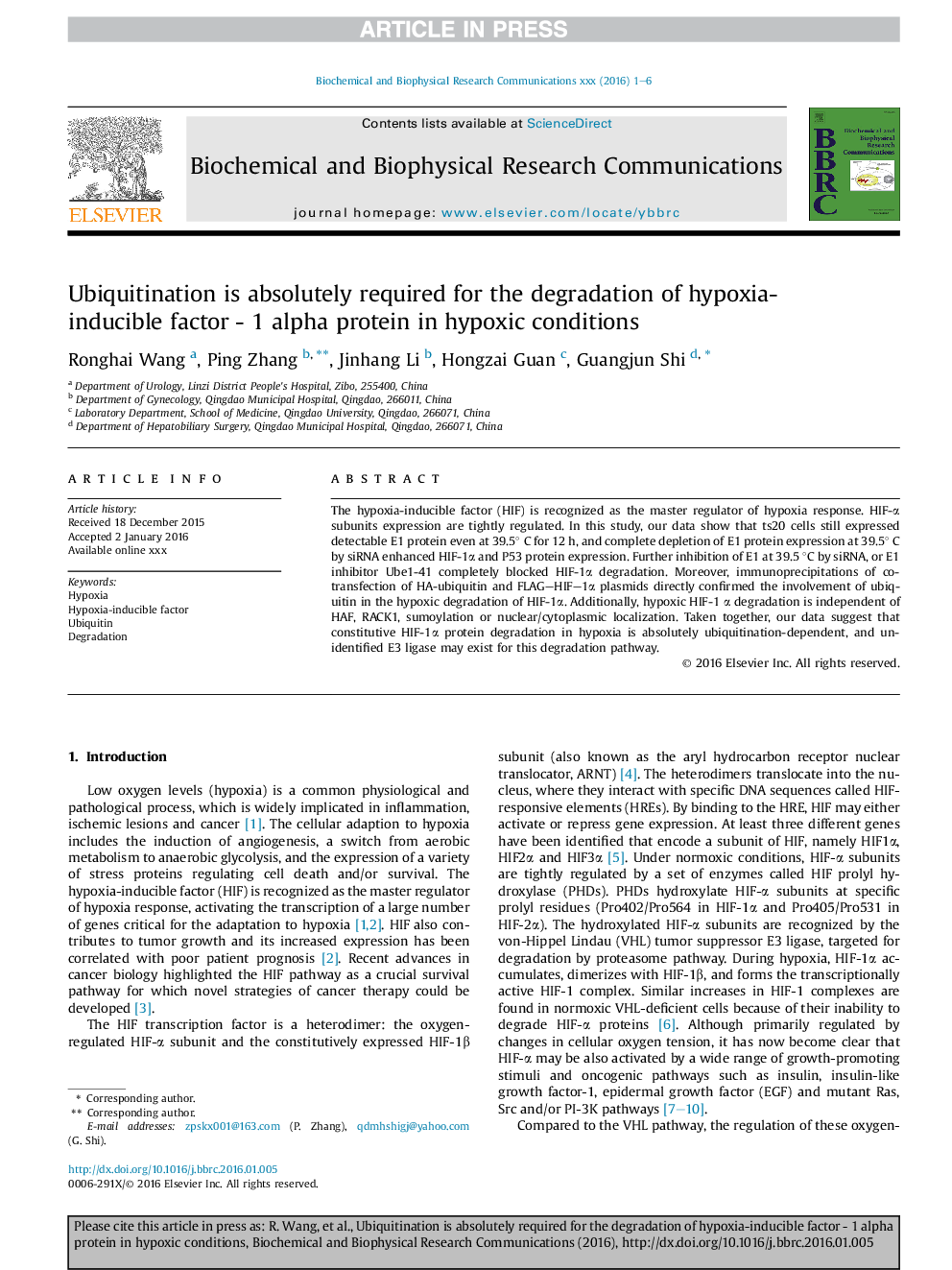| Article ID | Journal | Published Year | Pages | File Type |
|---|---|---|---|---|
| 10749361 | Biochemical and Biophysical Research Communications | 2016 | 6 Pages |
Abstract
The hypoxia-inducible factor (HIF) is recognized as the master regulator of hypoxia response. HIF-α subunits expression are tightly regulated. In this study, our data show that ts20 cells still expressed detectable E1 protein even at 39.5° C for 12 h, and complete depletion of E1 protein expression at 39.5° C by siRNA enhanced HIF-1α and P53 protein expression. Further inhibition of E1 at 39.5 °C by siRNA, or E1 inhibitor Ube1-41 completely blocked HIF-1α degradation. Moreover, immunoprecipitations of co-transfection of HA-ubiquitin and FLAG-HIF-1α plasmids directly confirmed the involvement of ubiquitin in the hypoxic degradation of HIF-1α. Additionally, hypoxic HIF-1 α degradation is independent of HAF, RACK1, sumoylation or nuclear/cytoplasmic localization. Taken together, our data suggest that constitutive HIF-1α protein degradation in hypoxia is absolutely ubiquitination-dependent, and unidentified E3 ligase may exist for this degradation pathway.
Related Topics
Life Sciences
Biochemistry, Genetics and Molecular Biology
Biochemistry
Authors
Ronghai Wang, Ping Zhang, Jinhang Li, Hongzai Guan, Guangjun Shi,
